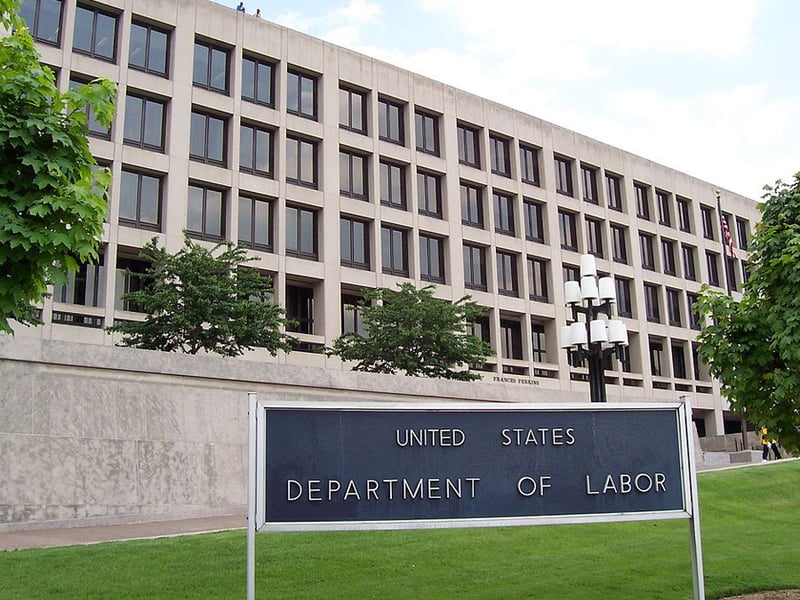

Retirement plan advisers, record keepers and others seeking to operate pooled employer plans can begin registering on Nov. 25 and launch their plans as soon as Jan. 1, the DOL announced Thursday.
The Department of Labor’s final rule on registration requirements for pooled plan providers, or PPPs, takes effect this month. Notably, the final version of the rule extends a waiver for PPP applicants between Nov. 25 and Jan. 31, allowing them to forgo the normal 30-day period between filing and beginning a PEP.
Many advisers, record keepers, third-party administrators and others -- potentially hundreds -- are expected to file as PPPs in the coming weeks in order to launch the first PEPs on Jan. 1 and have a full calendar year of contributions for their participants.
“My expectation is that you’ll see a lot of filings in the next six weeks or so,” said Kelly Michel, principal at KME Retirement Consulting. Entities that are planning to launch PEPs “are all going to try to get the word out” as soon as possible, Michel noted.
“I don’t think you’re going to find a current stakeholder that is excluding interest in participating in this,” she said.
In the 78-page rule issued Thursday, the DOL clarified requirements for PPP registration and the filings the entities will be required to make after their plans are in operation. Along with registering with the DOL, PPP applicants will also have to register with the Treasury and IRS.
“It is nice to see that the Department provided transition relief through Feb. 1, 2021, and additional clarity on the timing requirements for PPP registration going forward,” David Levine, principal at Groom Law Group, said in an email. “In addition, the steps taken to further simplify the requested data and the more flexible timing rules for supplementing registration information are significant positives of the final rule.”
PEPs are a result of the SECURE Act, a forthcoming kind of multiple-employer plan that does not require participating employers to have connections in a trade group or other type of association. The new plan type is viewed as a way to considerably expand access to workplace retirement savings, and it also presents an enormous business opportunity for plan providers. PEPs could open up a market for doing business with small employers that have never provided their workers with retirement plans.
One issue that some commenters raised about the DOL’s proposed version of the rule involved disclosures that PPPs must make about state and federal criminal or civil proceedings. Because the documents will be easily accessible by the public -- and will almost certainly be scrutinized by employers seeking to participate in a plan -- some commenters said they worried that some disclosures could unfairly taint their reputations.
The DOL had asked whether it should require disclosure of settlements in civil cases, but it opted not to do so, based on public comments. The regulator will require PPPs to disclose ongoing criminal cases, though it will allow registrants to later remove that information from their files if they are acquitted, according to the final rule.
“Our position is always that more disclosure is better,” said Terry Power, president of The Platinum 401k, who is planning to register as a PPP. Power is also considering building a website that would make the forthcoming PEPs provider database more accessible, he said.
“We’re encouraging people to know who their PPPs are, because it’s an important part of the [vetting] process,” he said.
The DOL is also mandating that PPPs disclose the names of any affiliates that will provide services to their plans, a requirement that could identify conflicts of interest. That is a slight change from the proposed rule, which would have asked PPPs to further explain the nature of their relationship with those entities.
“A chief concern of the Department is conflicts of interest,” the DOL wrote in the rule. “Pooled plan providers are in a unique statutory position in that they are granted full discretion and authority to establish the plan and all of its features, administer the plan and to act as a fiduciary, hire service providers and select investments and investment managers.”
As long as the registration process is not too onerous, there does not appear to be anything negative about the requirements, Michel said.
“This is something new. The intention is good. [With] the idea that folks who want to raise their hand, stand up and be a fiduciary for multiple organizations’ retirement plans, registration is a way for the regulators to get an understanding of what’s going on in the marketplace,” she said. “It’s good to have oversight for those organizations that are newly creating plans.”

Former Northwestern Mutual advisors join firm for independence.

Executives from LPL Financial, Cresset Partners hired for key roles.

Geopolitical tension has been managed well by the markets.

December cut is still a possiblity.

Canada, China among nations to react to president-elect's comments.
Streamline your outreach with Aidentified's AI-driven solutions
This season’s market volatility: Positioning for rate relief, income growth and the AI rebound
